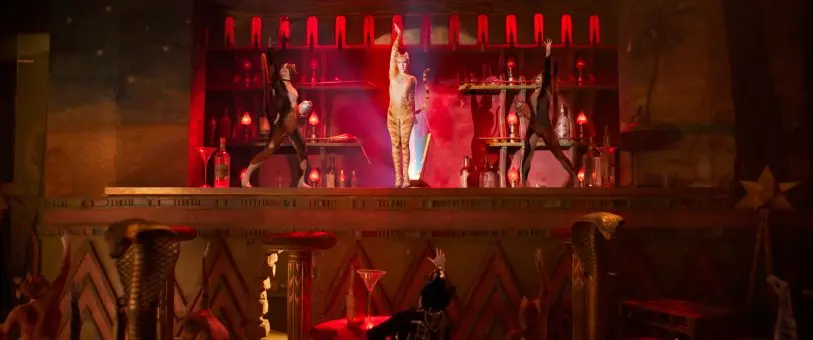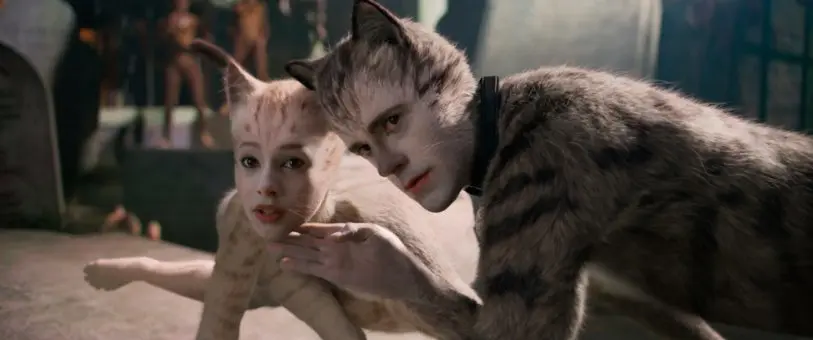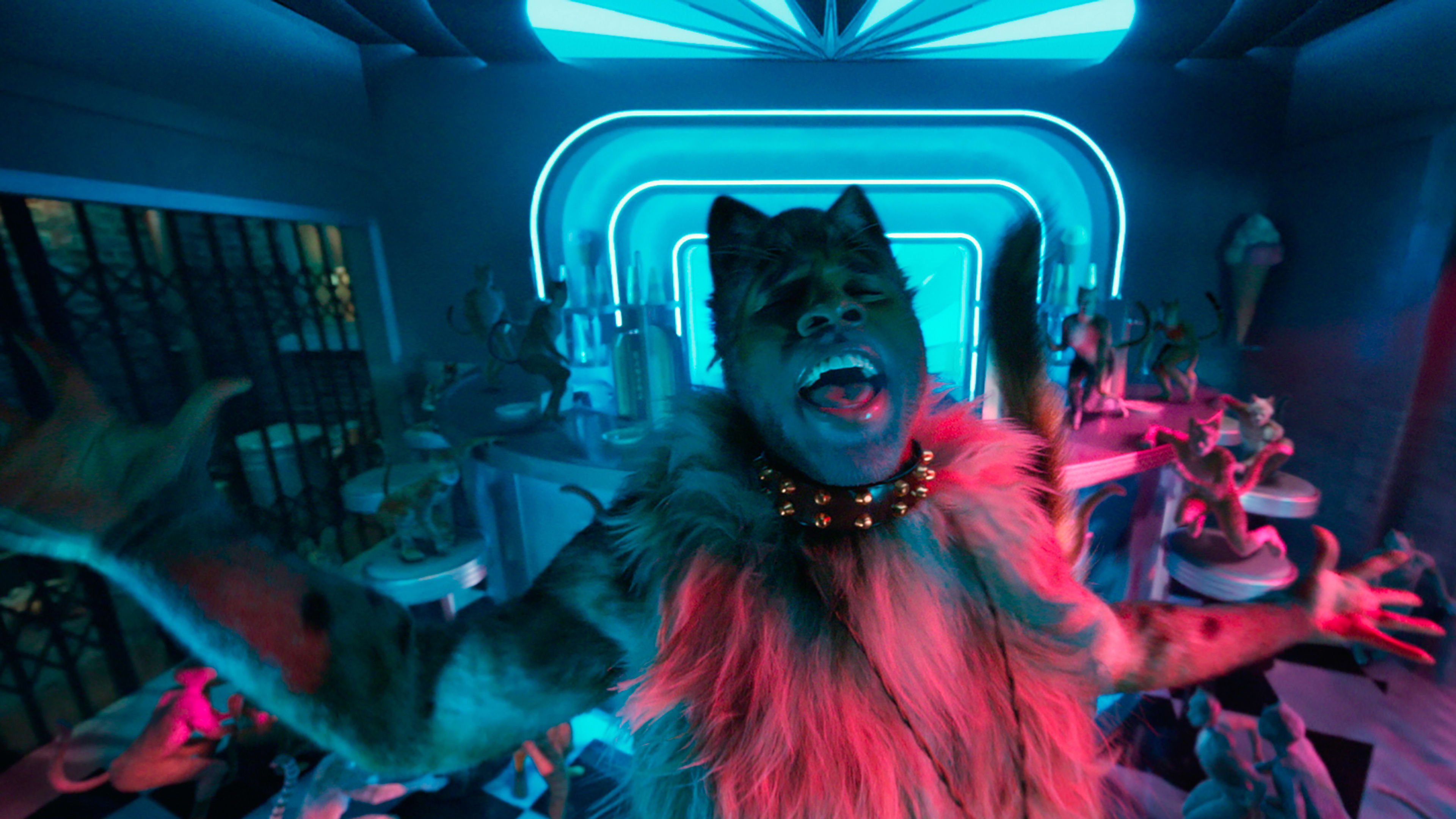About 10 minutes into the movie Cats, I fell deep into the uncanny valley.
Human-cat hybrids were crawling and dancing across 1930s London in cringe-inducing computer-generated contortions that made them look either like products of a Boston Dynamics experiment gone wrong or B-list Marvel heroes.
But just when I thought I might never find familiar terrain again, the chorus of the musical’s earworm of an opening number, “Jellicle Songs for Jellicle Cats,” began to soar. I was pulled back. Jellicles can, and Jellicles do, apparently.
My initiation into Andrew Lloyd Webber’s Jellicle Mystery Tour began one evening in 1983 when my parents bundled my sister and me into the car and ferried us down I-95 from our comfortable Connecticut suburb, through the wilds of midtown Manhattan, and into the plush seats of Broadway’s Winter Garden Theatre. We were there to see the musical that had become a monster hit in London and was now winning over New York.
I didn’t know what to expect. My only experience with musical theater to that point had been A Chorus Line, so I assumed that Cats would offer something similar: a group of actors hoofing their way through songs about parents, plastic surgery, and singular sensations. Instead, I encountered a stage that had been transformed into a junkyard stacked with oversize detritus—car parts, appliances, a tube of toothpaste. The lights went down, and the theater filled with a dizzyingly weird overture that sounded like a synthesizer-propelled spaceship was descending to earth. Then the actors appeared. With glowing eyes, cat-striped unitards, and elaborate fur headpieces, they sauntered onstage in balletic, feline movements. Some even began licking their curled-up hands and cleaning behind their ears.
Even as a child, I had to wonder, What the hell was happening?

We bought the album (on vinyl), and I memorized all the songs. My sister and I performed selections of the musical for my parents and unlucky dinner guests. I was always Mr. Mistoffelees, the prankster magician cat, while my sister played Grizabella, the glamour queen cat. (We had already figured out our typecasts.)
I grew older and got a hamster, which I named Mr. Mistoffelees. I grew older and got a cat, which I named Asparagus, after the musical’s “theater cat.” I grew older still and got a college boyfriend, whom I dragged to see Cats, which by then had earned the title of Broadway’s longest-running show and inspired legions of haters. His parents were New York intellectuals whose eyes rolled back when I mentioned our weekend plans. I considered it a victory when he came away a convert (or a convincing liar).
When the show briefly returned to Broadway in 2016, I made the pilgrimage again, this time with my parents, husband, and children. For better or worse, it was the same as I remembered. My children were enchanted, though not with the same all-consuming ardor that I had experienced. Although they were just elementary schoolers themselves, they had already seen plenty of spectacles in their lifetimes, on stages and screens of all sizes. Perhaps not surprisingly, the Broadway revival only stuck around for about 18 months.

The key was always going to be how to reconfigure the show for film, where plot holds more sway and faces demand to be seen up close. So he made concessions, weaving in some semblance of a narrative, adding a Jellicle initiate to act as a guide for the audience, and, most controversially, using CGI to apply catlike fur to human bodies and even faces, and to create flickering tails and ears. As everyone gathered from the movie’s trailer, the effect is weird.
But so were the painted faces and formfitting bodysuits of the original stage version:
The bigger problem is that in today’s digitally altered world, the ante for cinematic spectacle is astronomically high. And Hooper, it seems, couldn’t resist going all in. He needed to make a 21st-century extravaganza, after all. So his cats don’t just dance, they twist and turn at unnatural speeds and angles. They don’t leap, they fly. And slide down banisters, tap along London landmarks, and strut across stairs, countertops, and other surfaces and landscapes in ways that seem less feline than generically digitally enhanced. (The CGI is even less successful when applied to dancing cockroaches and mice.)
As a result, the frenetic chorus numbers feel more numbing than exhilarating, even when the music soars. Adding to the problem is the sound mixing, which has made the words to some of the musical’s biggest crowd-pleasers (such as the fizzy solo from the Jagger-esque Rum Tum Tugger) unintelligible.
Maybe children are now so inundated with entertainment options and so accustomed to visual effects that they need to see this kind of action to be properly wowed. But I have my doubts. My kids gasped when they saw Mr. Mistoffelees execute a series of perfect toe-touch jumps onstage in the revival, an act of astonishing athleticism. (Hooper’s Mistoffelees, meanwhile, appears to jump right into the rafters with little effort.)
Indeed, the best moments of Hooper’s Cats are when the movement stops and the actors, fur be damned, seem most human: Jennifer Hudson’s sobbing Grizabella belting out “Memory”; Judi Dench’s regal Old Deuteronomy offering Jellicle benedictions; newcomer Laurie Davidson’s timid Mr. Mistoffelees finding his magical mojo.
But there was always something else to Cats. For however over the top its score, the musical’s lyrics are surprisingly taut. Sure, the cats have tongue-twisting names like Munkustrap, Rumpleteazer, and Skimbleshanks. They sing about inanities like teaching cockroaches how to dance and literal cat burglary. But they do it with precision and wit, and with words that sounded to my young ear more mysterious and exotic than even that opening spaceship synth: ineffable, inscrutable, cunning, depraved. Snatches of phrases wormed their way into my kindergarten brain. I felt powerful using them. I was vaguely aware that these words had been written by a famous poet, but in the dark ages before the internet, certain information remained out of children’s reach until circumstance or coincidence guided it to them.

Lloyd Webber has had many Broadway successes, of course. But conjuring a musical from Eliot’s mid-century verse may have been his smartest trick. Even a 6-year-old could sense the poetic discipline holding the extravaganza in place.
“This is Tom’s vision and, really, it’s Tom’s movie,” Lloyd Webber announced from the stage of Alice Tully Hall, minutes before the premiere of the seven-years-in-the-making adaptation. Indeed, though the music and words remain virtually untouched from the stage version, this Cats is a different breed entirely.
Toward the end of the film, Idris Elba‘s character, the devilish cat named Macavity, manages to get himself stranded atop Nelson’s Column in the middle of Trafalgar Square. It’s a plot twist that seems engineered to give audiences a precipitously sweeping view of the city. It should have been awesome. But as I watched Elba caterwaul from Nelson’s bicorn hat, I couldn’t help but think, So this is the way the film will end. Not with a bang, but a whimper.
Recognize your brand’s excellence by applying to this year’s Brands That Matter Awards before the early-rate deadline, May 3.
